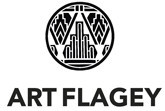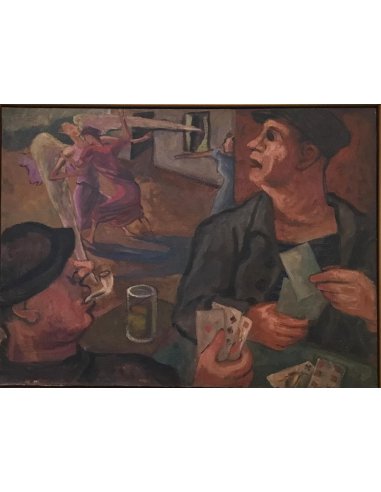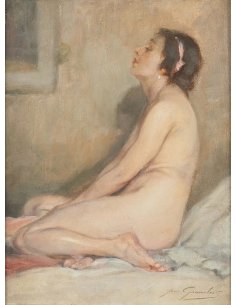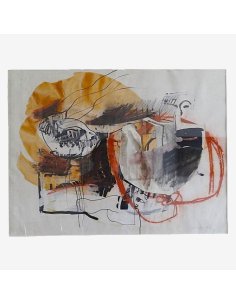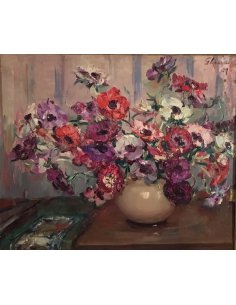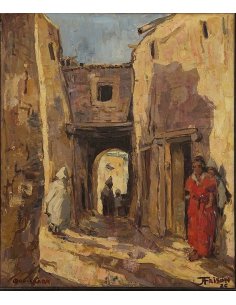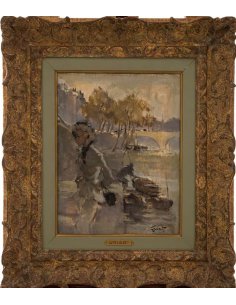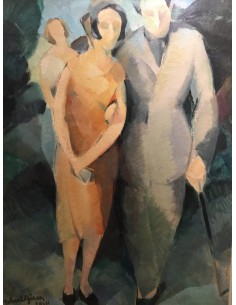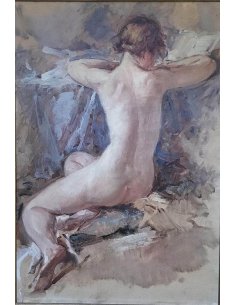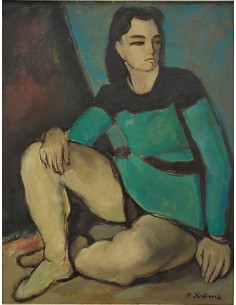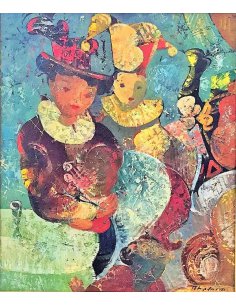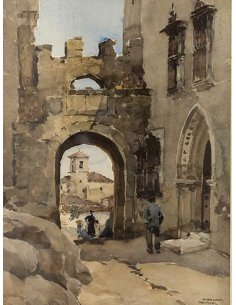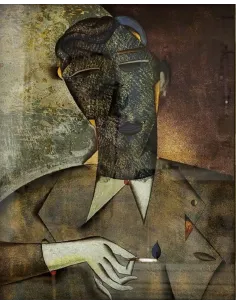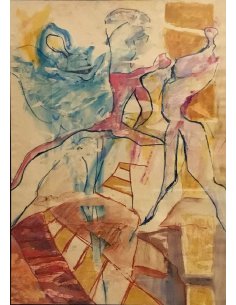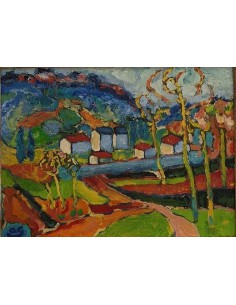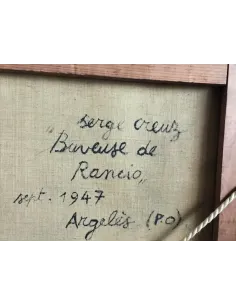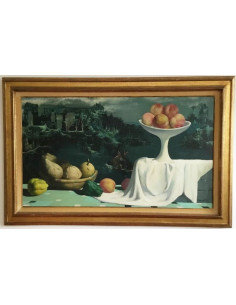Pierre-Louis Flouquet – „Jacob et l’ange aux joueurs de cartes“
The expressionist painting "Jacob and the Angel with the Card Players" (original title: "Jacob et l'ange aux joueurs de cartes") by Pierre-Louis Flouquet, offered at ART FLAGEY, depicts a dense, ambiguous scene: Two men are sitting playing cards in a smoky pub – with beer glasses, cigarettes, and a tense atmosphere. The everyday life of the working class is captured in bold colors and an expressive style.
In the background, a surprising, spiritual dimension breaks through the profane image: Jacob's biblical struggle with the angel appears like a vision – dynamic, almost dance-like.
Flouquet interweaves the everyday with the transcendent to create a tense composition, typical of his symbolist-expressionist visual language. The overlapping of myth and reality points to central themes such as inner conflict, faith, and human existence.
The work is authenticated by a photographic certificate from the artist's son. An exhibition catalog is included.
About the artist: Pierre-Louis Flouquet (1900 - 1967)
Pierre-Louis Flouquet, painter, draftsman, journalist, and writer, was an important representative of the 20th-century Belgian avant-garde.
Born in Paris in 1900 and raised in Brussels, he was one of the intellectual minds of the modern movement in Belgium. He was influenced early on by Cubism, as well as by Futurism and Fauvism.
He received his training at the Brussels Academy under C. Montald and G. Combaz (1914-1918). He shared his friend Magritte's studio.
In 1920, he encountered the ideas of De Stijl and Mondrian. In 1922, he founded the magazine "7 Arts" with the Bourgeois brothers, in which painters defended modernism. In the mid-1920s, he turned to abstraction. In 1925, Flouquet exhibited at the famous "Der Sturm" gallery in Berlin. Also in 1925, he founded the group "L'Assaut" together with Marcel-Louis Baugniet and Jean-Jacques Baillard.
Between 1920 and 1935, Flouquet developed a multifaceted oeuvre: from a cubist-realist style to abstract compositions and an expressive, figurative style of painting. From 1930 onwards, religious-symbolic motifs increasingly became the focus of his work. Works such as Jacob and the Angel particularly demonstrate this emotional and spiritual shift.
Despite his artistic innovation, he was denied widespread recognition. In the late 1930s, Flouquet withdrew from painting and worked as an art critic, architectural journalist, and writer.
Flouquet's works can be found in museums in Brussels and Ostend.
